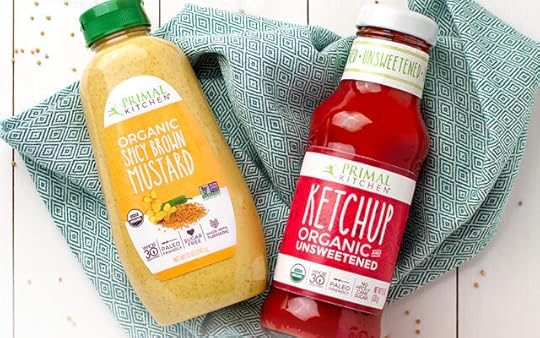Mark Sisson's Blog, page 139
June 8, 2018
My Goal Is To Get Better Each Day
It’s Friday, everyone! And that means another Primal Blueprint Real Life Story from a Mark’s Daily Apple reader. If you have your own success story and would like to share it with me and the Mark’s Daily Apple community please contact me here. I’ll continue to publish these each Friday as long as they keep coming in. Thank you for reading!
 My journey is a bit of a roller coaster, and starting back in 2011. I had reached my all time heaviest, 250 pounds. At that time I decided to make a change. I started training for a 5k (my last 5k) and read Robb Wolf’s “The Paleo Solution.” I started losing weight, pushed myself to run on a treadmill at my company’s on-site gym and got ready for my Disney 5k through Epcot.
My journey is a bit of a roller coaster, and starting back in 2011. I had reached my all time heaviest, 250 pounds. At that time I decided to make a change. I started training for a 5k (my last 5k) and read Robb Wolf’s “The Paleo Solution.” I started losing weight, pushed myself to run on a treadmill at my company’s on-site gym and got ready for my Disney 5k through Epcot.
Prior to this, I would experience abdominal pain, irregular stool, and if going out to dinner, I would have to go straight home before having to get to the bathroom. Let’s just say that if we weren’t going straight home I got very good at knowing where the bathrooms were at different commercial locations. Along with this, I had high blood pressure, coupled with the abdominal pain (which I thought was an ulcer) and went looking for a doctor to test me for celiac disease.
Went to my first appointment in the town I was living in (I was over an hour away from my old primary and figured I should find someone close) and went in and told the doctor my list of issues, that I was currently following paleo and asked to be tested for celiac. This doctor’s response was that I was just having spasms in my colon and that I needed to eat more grains to get fiber.
That didn’t sit well with me. So I started looking for another doctor. I found an Osteopath who accepts my insurance and agreed to give me the blood test for celiac. At this point in time I was already paleo for a month and starting working out at a local Crossfit gym. I got the results back a week later and was advised that I tested positive. After no gluten for a month.
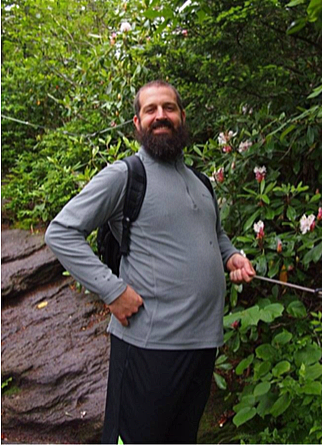 My doctor advised me to get a colonoscopy, and advised me to eat gluten again before the colonoscopy so that it would be easier to see any negative effects. Reluctant I did and felt like crap right away. Two days in I couldn’t finish a workout, five days in I couldn’t walk my dog without getting a headache. Ten days in I still hadn’t heard from the gastrointestinologist, so I called them. At first they had no idea who I was, then told me they just found my file and someone would call me when they reviewed it. I never heard from them again.
My doctor advised me to get a colonoscopy, and advised me to eat gluten again before the colonoscopy so that it would be easier to see any negative effects. Reluctant I did and felt like crap right away. Two days in I couldn’t finish a workout, five days in I couldn’t walk my dog without getting a headache. Ten days in I still hadn’t heard from the gastrointestinologist, so I called them. At first they had no idea who I was, then told me they just found my file and someone would call me when they reviewed it. I never heard from them again.
I dropped all gluten and went back to paleo. Was I strict? At first yes, then over time I would start including dairy (ice cream) and would go back to some salty snacks. I was holding my own until I wasn’t. In 2014 after putting on some pounds, I started feeling lethargic in the afternoons. I had trouble driving home from work. Didn’t have the energy to work out. So I went to my doctor.
Having moved back to Clearwater, FL I was back to my old primary doctor. I was 36 at the time and his first conclusion was that I was low on testosterone. To which I argued against as I was still waking up with morning wood. With that he also agreed to test my thyroid along with my testosterone levels. Well, my testosterone levels were fine, but my TSH was low and I was advised that I had hypothyroidism.
He wrote me a prescription for synthroid and sent it to my pharmacy. I was not taking supplements and I was not taking any other medicines. I picked up the prescription, took it home, placed it on a table and never opened the bag. I went back to Robb Wolf’s book and looked up the Autoimmune Protocol. I cut out everything listed there. Switched out my coffee for tea and moved forward. One month later I got a call from my pharmacy about my refill. I told them not to refill it, since I never used the original and threw the old box away.
Five months later I was back at my doctor’s office for a follow up, had blood work done and my TSH was back to normal. No signs of hypothyroidism. With that I started to reintroduce foods, and kept pushing my luck, always mindful to not have gluten, but if I was at a Mexican restaurant I would have the beans and tortillas. Yes the ice cream came back too. See, roller coaster.
2016 rolled around and I was now back up to 230 and having very serious knee pains. No matter what I did, I couldn’t get rid of the knee pain. A friend of mine who is a chiropractor got me set up to get an MRI done. Went through with the MRI and found out that I have a Baker’s cyst in my right knee. After doing some poking around, I found that it in itself was not an autoimmune disease, but that it was related to autoimmune diseases, and since I already had been diagnosed with two autoimmune diseases, I know that this is something to look out for. Between the cyst and the bit of weight gain, it caused me to pursue another round of AIP and my new wife was on board. We bought a cookbook and she went through and found all the recipes she liked and bulk cooked them so we would always have choices for dinner.
Did a 90 day bout of AIP—the week camping in the before picture above was the hardest, but we made it work. At the end of the 90 days my first choice to add back in was eggs so that I could go out to breakfast with my family. That Saturday morning, we ate eggs together, Sunday I went to breakfast with my family and ate eggs. That following Tuesday I hit a wall, harder than I have ever hit a wall in my life. My energy levels dropped to zero out of nowhere and by 2 in the afternoon I was in bed and out until seven that night. Right there I knew there was an issue with eggs. The following day I had some pain in my knee and quickly put eggs on the no fly list of foods.
Fast forward another week and I attempted to add back another removal from the AIP list. This time alcohol. I couldn’t have eggs anymore with friends, but at least I could have a drink with my friends. Went out, had a few drinks, two days later, in bed for another lost afternoon/evening of sleep, followed with knee pain. Alcohol was now on the no fly list and I was 0 for 2 in reintroductions. Another reason this is sad is that every year for Christmas I make eggnog from scratch.
Afraid of going 0 for 3, my next attempt was nuts and seeds, particularly coffee. Thankfully I was ok there. I had always joked to my friends that I would quit alcohol before I quit coffee and looks like I was right. Slowly but surely I added things back, up to and including dairy. I can say that my trigger foods are gluten, eggs and alcohol. I am sometimes cautious of dairy due to the relation of allergens to eggs. Now when I do have ice cream I either have nut milk ice cream or egg free. Got to keep some treats in for occasional indulgence.
 Again, roller coaster. Entering 2018 I had goals. One was to become a Primal Health Coach, which I have done. The other is to compete at the Scottish Highland Games Masters World Championships. I have qualified and will be off to Stuttgart, Germany in September to compete in the lightweight division.
Again, roller coaster. Entering 2018 I had goals. One was to become a Primal Health Coach, which I have done. The other is to compete at the Scottish Highland Games Masters World Championships. I have qualified and will be off to Stuttgart, Germany in September to compete in the lightweight division.
I am now following a keto approach, making sure that all gluten, eggs and alcohol are avoided as I still have a layer of fat to remove and get myself under 200 pounds. I am doing this now, well in advance of when I have to weigh in because I want to get there in a healthy fashion and be comfortable throwing at that weight. I don’t want to water cut. That is not primal in my book.
I haven’t always eaten the right things at the right time. I enjoy food. I’m sure most of you reading this enjoy food. There is a time and a place for indulgences, and primal and non primal ways to go about it. I’m not perfect, but that is not my goal. My goal is to get better each day. To get leaner and to throw heavy things farther. What’s not primal about throwing things? I’m eating meats and veggies, throwing rocks and trees, getting as close as I can to living primal. The more I help myself, the more I want to help others.

The post My Goal Is To Get Better Each Day appeared first on Mark's Daily Apple.



June 7, 2018
Are You Ready? 8 Tools and Tips For Your Challenge Prep
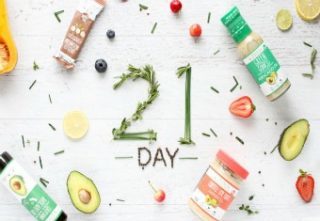 How many of you will be joining us for the Challenge next week—and how many for the first time? (I’d love to see a show of hands in the comment section.)
How many of you will be joining us for the Challenge next week—and how many for the first time? (I’d love to see a show of hands in the comment section.)
The cool thing about the Challenge each year is this: everybody comes at it from a different place. Some folks are hundred pounds overweight and haven’t exercised in years. Some are at the top of their Primal game but love the community engagement and chance to encourage others. Most are at every stage in between.
Behind every participant across that spectrum is a fascinating story. Your story. The one in which you haven’t quite had the life you’d hoped lately—and the one in which you claim it back.
Today I’ve got some ideas and resources for you to consider. If you’re on the fence about joining us, maybe these can get you over the hump and get you committed. I sure would like to see you with us.
Shop For the Challenge the Weekend Before
Does your pantry and refrigerator reflect your Challenge intent? You have four days to dump or donate what you won’t be eating and to fill your kitchen with Primal fare. Here are some lists (for Primal and for keto) that can be of help.
Spend Time Choosing Primal Recipes
Here’s the catalog of every MDA recipe, but don’t forget to check out the goodies over at Primal Kitchen®’s recipe blog, too.
Prep To Track Your Day-To-Day Practices (and Progress)…If That’s Your Thing
It’s easy to get wrapped up in the “vastness” of a goal. Some of us benefit from seeing our accomplishments grow task by task. For those who are wired that way, keep a food/exercise/stress management journal or wear a tracker if you like gadgets. In addition to the actual tasks, make some observational notes on how you feel, what you’re able to accomplish, where you feel challenged. Looking back on your notes will give you a sense of how far you’ve come and how you stuck with your plan over time.
Work With Your Own Goal Style If You’re an Intuitive Type
I did a whole post on this (“Alternative Goal Setting: How Free Spirits and Slow Burners Can Achieve Their Health Visions”) during a Challenge last year, and I still get mail about this one. If you’re naturally skeptical of structure, take a look.
Check Out the WOW Workout Series
For anyone who needs guidance on how to fit in a workout each day without a gym membership or any special equipment, I’ve got dozens of ideas right here. Whether it’s The Grok Throwdown, The Cave Bear, Bringing Home the Kill, or the Couch Workout, you’re sure to find a favorite.
Divide and Conquer If You Need To
Sometimes it’s easier to tackle one aspect of a lifestyle than to attend to all of them at once. While the Challenge encompasses all of the areas, don’t worry if you need to focus to get the best result. Although all the elements of the Primal Blueprint work together (and can actually make other efforts easier), the most important point is to make the change you’re willing to make. Take on what you feel you’ll stick to. If you keep the rest in sight, chances are you’ll begin gravitating toward those other changes anyway. Healthy choices have an elegant way of begetting other healthy choices.
Make a Burn Pile of Your Past Excuses
Think of the excuses you’ve used in the past for not taking this next step—whatever it is you’d tackle on this particular Challenge. Write them all down on paper. Individual post-its if you want to get fancy about it. But then watch them all go up in flames. For 21 days, let them stay in the ashes. After three weeks, if you want them back you can have them.
Pick a Mantra You’ll Hang Onto
If excuses have derailed you in the past, come armed with something to fill that space instead. Choose a mantra you’ll turn to again and again throughout these three weeks. THIS will be your fallback when the going gets tough or you get tired. This will be your stepping stone back to your intention.
Thanks for stopping by today, everybody. The bees and I are getting next week set up for one awesome Challenge experience. I’ll have multiple announcements on Monday to kick us off and some tips for meal prep as well. In the meantime, let me know how you’re prepping for the 21-Day and how we can be of help.

The post Are You Ready? 8 Tools and Tips For Your Challenge Prep appeared first on Mark's Daily Apple.



June 6, 2018
Supplements For Brain Health: What Nutrients and Supplemental Foods Make the Most Difference
 As humans, our most important bodily endowment isn’t our claws, sharp teeth, powerful haunches, iron grips, prehensile tails, venomous secretions, or aerosolized musk. It’s the brain. We use it to shape the world around us, to bend physical reality to our will, to manipulate matter and create powerful technological terrors. These days, the human brain is more important than ever. If you want to enjoy life, pursue and succeed at your passions, to conquer your little corner of reality—you need a healthy brain. Brain health is key to total health—and quality of life.
As humans, our most important bodily endowment isn’t our claws, sharp teeth, powerful haunches, iron grips, prehensile tails, venomous secretions, or aerosolized musk. It’s the brain. We use it to shape the world around us, to bend physical reality to our will, to manipulate matter and create powerful technological terrors. These days, the human brain is more important than ever. If you want to enjoy life, pursue and succeed at your passions, to conquer your little corner of reality—you need a healthy brain. Brain health is key to total health—and quality of life.
By some analysis at least, however, neurogenerative diseases remain on the rise and take an ever more extreme emotional and economic toll. So, how do we keep our brain health intact? While much of it comes down to doing the things that keep your brain healthy and avoiding the things that harm it—exercising instead of sitting on the couch, breathing exclusively fresh air instead of tobacco smoke, sleeping instead of staying up—another big variable is the food we eat.
First, I’ll list the most important nutrients for brain health and function, keeping things brief to get through them all. To be honest, this isn’t even “all.” It’s likely that every single micronutrient we’re supposed to be consuming plays a role in brain health, so central is the brain to our basic functioning.
Then, I’ll highlight some of the most critical food sources of these nutrients.
Let’s go.
Nutrients To Note
B Vitamins
The B vitamins are co-factors in every pathway related to dementia or Alzheimer’s disease.
Choline
Precursor to acetylcholine, the neurotransmitter involved in focus, memory, and processing.
Vitamin E
Reduces oxidative stress and inhibits oxidation of fragile polyunsaturated fats in the brain. Also reduces lesion formation in brain white matter, a strong risk factor for cognitive decline.
Vitamin D
Vitamin D is one of those compounds that interacts with seemingly every pathway in the body. Whether it’s immune function, hormonal production, musculoskeletal maintenance, or even UV protection, vitamin D plays an important role. Dementia patients tend to have very low vitamin D levels, and good vitamin D levels predict strong executive function ten years down the road. High-dose supplementation may even improve visual memory in D-deficient subjects. For those who need more in their lives, sun is key. Quality supplementation can help.
Magnesium and Iron
Magnesium and iron are two more nutrients that are involved with everything, including the brain. A recent study found evidence that patients with either mild cognitive decline or full-blown Alzheimer’s tended to have lower magnesium and iron levels and higher oxidative stress loads.
Zinc
Regulates absorption of copper and prevents overloading, which can inhibit cognitive function. Along with magnesium and vitamin D3 (among others), helps testosterone production. Testosterone is critical for cognitive function, especially mental energy and drive.
Lutein and Zeaxanthin
Typically valued for their beneficial effects on eye health, these plant-derived carotenoids are also linked to cognitive function. Seniors with low levels of both exhibit lower neurological efficiency—their brains work harder during cognitive tasks. And a year of luten and zeaxanthin supplementation slows cognitive decline in community-dwelling adults. Even young healthy adults see improvements to memory upon supplementation, if their baseline levels are low.
Creatine
Creatine doesn’t just enhance physical performance. Creatine is also found in the brain, where it maintains cognitive function by recycling ATP, the basic energy currency of the body. Studies show that vegetarians who supplement with creatine enjoy improved cognition and physical performance. Vegan brains and muscles, which have even less (small amounts of creatine are present in eggs), should benefit even more from supplementation. Creatine also provides quick ATP for intense, short-lived physical feats.
Long Chain Omega-3 Fatty Acids
Having a good ratio of omega-3:omega-6 in our tissues sets us up for a healthy inflammatory response to oxidative insults—not too little, not too big. There’s evidence that balanced omega-3/omega-6 ratios can actually prevent the “initiation and progression” of many neurological disorders by improving the efficiency of our inflammatory response.
What Are Some Of the Best Foods For These Nutrients?
Red Meat
A great source of creatine, zinc, iron, and B vitamins. Its even got a little-known nutrient called carnosine, which acts as a brain antioxidant.
Extra Virgin Olive Oil
A great source of monounsaturated fat, which is critical for stable cellular membranes in the brain and other parts of the body. Spicy or peppery EVOO indicates the presence of high levels of olive phenols, which show efficacy in slowing the onset of dementia and preserving brain autophagy.
Avocados and Avocado Oil
They’re rich in vitamin E, lutein and zeaxanthin.
Leafy Greens
A great source of minerals like magnesium and carotenoids like lutein and zeaxanthin. Also, we can’t just eat multiple avocados every single day (can we?).
Chicken Hearts
They’re rich in every B-vitamin except for thiamin (still have thiamin, just not as dense as the other B-vitamins). They are loaded with zinc and iron. They’re a good source of cholesterol, which can help repair damaged brain junctions. And despite being an organ meat, they’re very mild. I like marinating chicken hearts in lime juice, garlic, onion, cumin, and olive oil, spearing them with skewers, and roasting over open flame.
Wild Sockeye Salmon (Skin On)
The intense red color indicates the presence of astaxanthin, an “animal carotenoid” with . Farmed salmon producers even dose their flock with synthetic astaxanthin; otherwise, the fish will be grey. Salmon is also a good source of (highly bioavailable) vitamin and, of course, long chain omega-3 fatty acids. Those omega-3s and that astaxanthin probably have a synergistic relationship, each increasing the effect of the other. Here’s a quality option for those who prefer a supplement to regular fish intake or want the added assurance a supplement provides.
Pastured-Raised or Omega-3 Enhanced Egg Yolks
Not only do they have tons of choline and additional folate and other brain-supportive micronutrients, they contain long-chain omega-3 fatty acids bound up in phospholipid form. When an egg is formed inside a bird, many of the fats come embedded in phosopholipids—highly bioavailable vehicles that deliver fats and nutrients directly to the brain. DHA-rich phospholipids enable faster, more fluid transmission of data across brain synapses. A good pastured egg will also have appreciable amounts of vitamin D in a form 5 times more bioavailable than vitamin D3.
Blueberries
A number of studies in both young and old, healthy and cognitively impaired, find that eating normal amounts of blueberries can improve cognitive function. Just a single dose of a blueberry drink (made with actual blueberries) triggers an acute boost to memory retention in children; a single dose of freeze-dried wild blueberries triggers boosts performance in children engaged in a cognitively demanding task. Older adults with cognitive impairment who eat blueberries improve their cognition. Older adults without cognitive impairment who eat blueberries improve brain activation. Plus, they taste great.
Look for blueberries that stain your mouth, an indication of high polyphenol content. Wild Boreal blueberries from Trader Joe’s have been the best I’ve found to date (and they’re quite affordable without being overly sweet).
Dark Chocolate
In case you needed another reason to eat some high quality high-cacao dark chocolate, cocoa flavanols enhance cognitive function in the elderly with and without cognitive decline.
That’s a pretty strong start. For further discussion of this topic, do your brain a favor and pick up a copy of Max Lugavere’s Genius Foods, in which he lays out a definitive guide to eating right for brain health. And be sure to check out his recent chat with host Elle Russ on the Primal Blueprint Podcast.
If you have any questions about supplements, nutrients I might have missed, supplemental foods, and brain health, feel free to ask down below. Thanks for reading!

The post Supplements For Brain Health: What Nutrients and Supplemental Foods Make the Most Difference appeared first on Mark's Daily Apple.



June 5, 2018
2 Big Announcements—and a Giveaway!

As I always say, summer is my favorite time of year, and this go-round might just be the best. I’ve got two big announcements today that have been a long time coming.
First up, I’ve got two brand spankin’ new condiments for your summer cookouts. Anyone care to take a guess? It’s a pair you won’t want to live without this season.
Next up, I’m handing the reins to my staff next week as they kick off our annual 21-Day Summer, Staff-Led Challenge. They’ll be sharing their favorite Primal eats, their active vacay shots, their relaxation routines and more.
But we’ll have all the blow-out contests and prizes of a traditional 21-Day as well—with one grand prize so big Grok would be proud. It might just be the biggest I’ve ever given away for a Challenge.
And, speaking of giveaways—I’ve got one today with a prize for lucky 5 commenters.
The 21-Day Challenge—and the 21-Day Primal Reset Program
With a new season comes new energy, which is why our team is ready to announce our favorite, much anticipated event of the year: The Primal Blueprint 21-Day Challenge! This year’s challenge will run from June 11-July 1, and we’ve got a big lineup of contests, prizes, and all around fun activities planned for everyone who wants to participate.
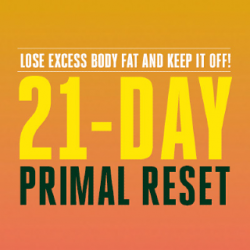 Whether you’re new to Mark’s Daily Apple, you’ve been incorporating (but not quite committing) to Primal principles for a while, or you’re an old timer ready for a new layer of Primal living, I hope you’ll join us.
Whether you’re new to Mark’s Daily Apple, you’ve been incorporating (but not quite committing) to Primal principles for a while, or you’re an old timer ready for a new layer of Primal living, I hope you’ll join us.
Starting next week, you’ll be able to kick your summer goals into gear with thousands of other Primal folks looking to do the same—all in the service of living awesome and becoming your healthiest self, with the least amount of pain and sacrifice possible.
I’ll have a full announcement next week with all the details, but we’ll also be releasing a massive update, upgrade and reboot of our popular 21-Day Primal Blueprint Challenge course, now the 21-Day Primal Reset—with a whole new line-up of videos and resources to offer you continual support and detailed planning for your Challenge experience—and anytime you need your own reboot.
I’ll also have a list of resources on the blog Thursday to get the ball rolling. Consider what you want this summer to be in your life and how a 21-Day Challenge experience can kickstart that process. What have you wanted in terms of vitality, weight loss, strength, fitness, energy, calm, and inspiration? Let this month be that beginning.
Get the App—Only Through June 11!
 We’ve teamed up with Vimify once again to create a Primal Blueprint 21-Day Transformation Challenge accessible from your desktop computer or Android or iOS-compatible device (iPhone or iPad).
We’ve teamed up with Vimify once again to create a Primal Blueprint 21-Day Transformation Challenge accessible from your desktop computer or Android or iOS-compatible device (iPhone or iPad).
First things first: get the Vimify app and join the 21-Day Challenge. Seriously, go download the app—either to your computer or iPhone/iPad/Android—and sign up right now. It’s FREE, it takes just a couple minutes, and it will enrich your experience in the weeks to come. (Note: When signing up, make sure you’ve entered your email address correctly and that your password is at least 8 characters long.)
From there, you’ll have a series of Prep Tasks to complete before the Challenge starts next week, including:
Purge your pantry of all non-Primal foods and restock it with Primal fare. Doing this now allows you to jump headfirst into the Challenge when it begins.
Do a Primal Essential Movement assessment. Determine your level of physical fitness so you know what you’re working with and can plan fitness goals accordingly.
Invite friends to join you in the Challenge. The strength of this app lies in the community you build, the accountability it promotes, and the healthy competition it provides. You need people to get those benefits.
You can also review the Primal Blueprint Guides to the aspects of Primal living that are especially important to success this Challenge, like the 10 Laws, Shopping Guide, Primal Essential Meals, and the Carb Curve.
After that, it’s a waiting game. Once the Challenge begins, the daily tasks will be linked to the daily challenges, contests, and content posted right here on Mark’s Daily Apple.
***Important note: If you want to participate in the app challenge you have to sign up by June 11th. There is no joining mid-Challenge. The app challenge is available all year on a regular, revolving basis, but for this month only, the entry fee has been waived. Long story short, get in soon!
Introducing PRIMAL KITCHEN® Ketchup and Mustard!
I’m thrilled to introduce Primal Kitchen’s latest addition to the game-changing family of condiments. That’s right—ketchup and mustard are back on the menu.
First off, my Organic Unsweetened Ketchup. That’s right, no dates, honey, high fructose corn syrup or other sweeteners in sight. It’s Whole30® approved, paleo-friendly and infused with nourishing, USDA organic ingredients, including organic balsamic vinegar, and packed with the wholesome flavor you’d want from a backyard BBQ. Add its perfect complement with Organic Spicy Brown Mustard. Smoky and savory, it’s packed with zesty turmeric and other USDA organic ingredients for your favorite summer spreads.
Looking to find these in stores near you? Stop by your local Whole Foods Market. They’ll be stocking our Organic Unsweetened Ketchup and Organic Spicy Brown Mustard all summer long! Or order from PrimalKitchen.com today.
And look for a special promotion with our Ketchup and Mustard in tomorrow’s Mark’s Daily Apple newsletter. (Need to sign up? Just scroll to the bottom of this post.)
And Now For the Giveaway…
On Monday, June 18th (Week 2 of the 21-Day Challenge), our Primal Health Coaches will be taking over Dear Mark for an “Ask the Coach” column featuring YOUR questions. So, here’s your chance to ask away—and be entered to win one of 5 FREE Primal Kitchen Ketchup and Mustard prize pairings.
Have a question about what it’s like to work with a Primal Health Coach (or the process of becoming one)?
A question about beginning a Primal (or keto) transition?
Something about your Primal fitness routine?
Want to know more about food sensitivities or recovery strategies?
Here’s your chance to get a coach’s perspective on what it’s like not only understanding the Primal principles but also applying them within individual coaching relationships.
Just submit your comment on the board below by midnight PDT tonight (6/5/18), and you’ll be entered to win one of 5 sets of our new PRIMAL KITCHEN Organic Unsweetened Ketchup and Spicy Brown Mustard. The staff and I will choose 5 questions (decisions final) from among the bunch for the June 18th post and the prize package.
Thanks for stopping by today. I’ll look forward to reading your thoughts. Have a great week, everybody.

Save
Save
Save
The post 2 Big Announcements—and a Giveaway! appeared first on Mark's Daily Apple.



June 4, 2018
Dear Mark: Saturated Fat More Harmful to Liver Than Sugar?
 For today’s Dear Mark, I’m answering just one question from a reader. What are we to make of the new study purporting to show that saturated fat is the most harmful substance a liver can encounter? Should we remove all traces of it from our diets? Should we eat pure sugar? Quaff soybean oil? How relevant is an overfeeding study to a community of people dedicated to eating a sustainable, weight-reducing or -maintaining diet that includes saturated fat?
For today’s Dear Mark, I’m answering just one question from a reader. What are we to make of the new study purporting to show that saturated fat is the most harmful substance a liver can encounter? Should we remove all traces of it from our diets? Should we eat pure sugar? Quaff soybean oil? How relevant is an overfeeding study to a community of people dedicated to eating a sustainable, weight-reducing or -maintaining diet that includes saturated fat?
Let’s find out:
Hi Mark,
Did you see this study? http://care.diabetesjournals.org/cont...
What’s your take on it? Just got one of those classic emails from my vegetarian friend with only a link to the study and a smug emoji.
Oh yes, I knew this would come up after I linked to in on Weekend Link Love.
The title is “Saturated Fat is More Metabolically Harmful for the Human Liver Than Unsaturated Fat or Simple Sugars.”
I have a human liver. Do you? Probably. This is highly relevant to all of us, right?
Well, the first thing to understand is that this was an overfeeding study. Participants didn’t just eat a eucaloric diet with different energy sources. They each got a daily 1000 calorie snack on top of their normal diet for three weeks.
The SFA group ate 1000 extra calories in the form of butter, coconut oil, and blue cheese. The SFA:MUFA:PUFA ratio was 76%:21%:3%. Their liver fat increased by 55%.
The UFA group ate 1000 extra calories in the form of pecans, olive oil, pesto, and butter. Their SFA:MUFA:PUFA ratio was 21%:57%:22%. Their liver fat increased by 15%.
The Sugar group ate 1000 extra calories in the form of orange juice, soda, and candy. Their snack had no fat, all sugar. Their liver fat increased by 35%.
Saturated fat also increased lipolysis—the breakdown of fatty acids for energy—while unsaturated fat decreased it. Lipolysis normally increases during fasting or exercise. In that context, it’s a good thing and you end up losing body fat. If you have a steady stream of extra fat calories coming in, you won’t lose body fat. The researchers could have seized on this point and screamed “unsaturated fat inhibits lipolysis!” but they didn’t. Wonder why.
Also notable is the observation that overeating sugar increased de novo lipogenesis (creation of fat from sugar) in the liver by 98%. I was told that didn’t happen in humans, that de novo lipogenesis was a myth. Guess it can happen.
But, again, the most important thing to realize is that this was an overfeeding study. It wasn’t a weight loss study. It wasn’t designed to see which kind of diet spontaneously results in the most weight loss. It was designed to get people to eat 1000 extra calories from different nutrient sources to see how they affect liver fat. And they didn’t construct the entire diets around the hypothesis. From what I can tell, the participants ate their normal diets. Only the 1000 calorie overfeeding snacks were provided by the researchers.
You also have to consider choline. The more fat you eat, the more choline your liver needs to process that fat. In rats with fatty liver, supplementing with extra choline directly reduces liver fat. In Chinese women, a high choline intake protects against fatty liver. If the subjects didn’t increase choline as they increased fat overfeeding, they were bound to gain more liver fat. Remember: this was the whole point of the study.
Now with that out of the way, who is this study relevant for?
Those people who think keto gives them free license to consume as many calories as they can cram into their mouths. Don’t do that. Especially don’t do that with isolated sources of fat, including saturated fat. Overfeeding anything is bad news, unless you’re trying to gain lean mass, lifting hard and heavy on a regular basis, and the thing you’re overfeeding is whole food rather than isolated fat.
That’s it for today, folks. What are your thoughts? Does this study tell you anything new, or is it old news?
Let me know what you think down below. Take care, be well, and have a great day.

The post Dear Mark: Saturated Fat More Harmful to Liver Than Sugar? appeared first on Mark's Daily Apple.



June 3, 2018
Weekend Link Love — Edition 506
 Research of the Week
Research of the WeekSpin classes: good for your fitness, bad for your ears.
Merging academics with physical activity boosts both without sacrificing either.
In older adults, “negative wealth shocks” increase all-cause mortality.
A packed schedule kills productivity.
Keto-related changes to the gut biome mediate the reduction in seizure activity.
New Primal Blueprint Podcasts
 Episode 249: Wendy Myers: Host Elle Russ chats with Wendy Myers about the truth behind detox.
Episode 249: Wendy Myers: Host Elle Russ chats with Wendy Myers about the truth behind detox.
Each week, select Mark’s Daily Apple blog posts are prepared as Primal Blueprint Podcasts. Need to catch up on reading, but don’t have the time? Prefer to listen to articles while on the go? Check out the new blog post podcasts below, and subscribe to the Primal Blueprint Podcast here so you never miss an episode.
Interesting Blog Posts
Yes, you can still have bacon.
It’s hard to fathom the psychological toll of long-term space travel.
Media, Schmedia
Bakeries, candy shops receive bomb threats. Sugar cane plantation workers found beheaded. Unilever exec found smothered in canola oil-based margarine. Will nothing stop these keto-paleo zealots?
Everything Else
How mental “deficits” can actually become strengths.
Seattle mussels test positive for opioids.
Things I’m Up to and Interested In
I agree with this list: 13 health experts to help you live better and more creatively.
I’m entirely unsurprised: Turns out that overfeeding butter and coconut oil to the tune of 1000 extra calories is not a good treatment for fatty liver. Go figure.
Concept I’m pondering: Are dreams real? Does the distinction actually matter?
I’m even entirelyer unsurprised: Incentives matter.
I’m skeptical of the distinction made: Cheap bread, expensive bread—it’s all bread.
Recipe Corner
Tom kha gai, or Thai coconut chicken soup.
Paleo argentine guiso, or flat-iron stew.
Time Capsule
One year ago (May 27– Jun 2)
6 Primal-Minded Reasons to Hit the Farmers Market This Weekend – In case you needed more justification.
7 Alternative Therapies for Depression – Try these and see how they work.
Comment of the Week
“Sure, but now you have to carry a copy of that study around with you to show you mean it from a purely scientific perspective.”
– That’s good advice, Joanne.

The post Weekend Link Love — Edition 506 appeared first on Mark's Daily Apple.



June 2, 2018
Steak and Shirataki Noodle Stir-Fry
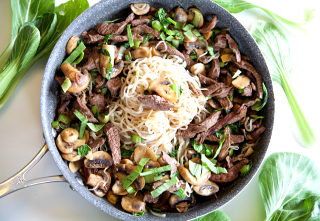 If you’ve been curious about shirataki noodles but haven’t tried them yet, this recipe is exactly what you need. It shows how easy it is to prepare shirataki noodles and satisfy your cravings for an Asian-inspired noodle dish.
If you’ve been curious about shirataki noodles but haven’t tried them yet, this recipe is exactly what you need. It shows how easy it is to prepare shirataki noodles and satisfy your cravings for an Asian-inspired noodle dish.
Shirataki noodles don’t have much flavor on their own, but when added to a saucy stir-fry they soak the flavor right up. A favorite way to serve the noodles is tossing them into a beef stir -fry with mushrooms and bok choy. This is an excellent stir-fry without noodles, but it’s fun and tasty to add shirataki every so often.
This stir-fry is delicious hot, but save some for lunch the next day. Shirataki noodle stir-fry is also really good served as a cold noodle salad.
Time in the Kitchen: 35 minutes
Servings: 4
Ingredients
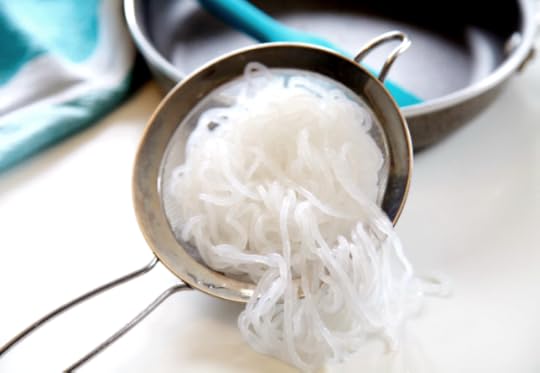
2 packages/14 ounces/400 g shirataki angel hair noodles
1 pound/453 g top sirloin or skirt steak cut into ¼ inch-thick slices (about 3 inches long)
2 tablespoons tamari (30 ml)
1 tablespoon rice wine vinegar (15 ml)
1 tablespoon sesame oil (15 ml)
1 tablespoon coconut aminos (15 ml)
1 teaspoon fish sauce (5 ml)
2-inches/5 cm ginger root, peeled and thinly sliced
2 garlic cloves, thinly sliced
2 tablespoons PRIMAL KITCHEN® Avocado Oil (30 ml)
8 ounces mushrooms, thinly sliced (230 g)
4 heads baby bok choy, thinly sliced
Instructions

Bring a large pot of water to a boil.
Open the packages of shirataki noodles and drain the noodles in a colander. Rinse well under cold water.
Add the noodles to the boiling water. Boil 2 minutes. Drain.
Heat a large skillet (12 inches/30 cm) or a wok over medium-low heat. Do not add any oil. Add the shirataki noodles to the dry skillet and cook for 8 to 10 minutes, using tongs to frequently turn and move the noodles as they cook. This process dries out the noodles. You’ll know they’re dry when they suddenly start to squeak as they’re moved around the skillet. Remove the noodles from the skillet and set aside.
Whisk together tamari, rice wine vinegar, sesame oil, coconut aminos, fish sauce, ginger and garlic.
Pour half of the mixture over the beef. Set aside.
Heat a large skillet (12 inches) or a wok over medium-high heat. Wait several minutes for the pan to get really hot, then add the beef. Cook, stirring just a few times, until meat is cooked, 3 minutes. Transfer the meat to a plate.
Let the pan heat up again and add the avocado oil. Add the mushrooms. Cook until mushrooms are soft, 3 to 5 minutes. Add the bok choy. Cook until just tender, 2 minutes.
Add the noodles and the reserved marinade. Toss the noodles well to coat. Add the beef to the pan and cook just until heated. Serve immediately.


The post Steak and Shirataki Noodle Stir-Fry appeared first on Mark's Daily Apple.



June 1, 2018
Becoming Fat-Adapted Has Been the Key To My Success!
It’s Friday, everyone! And that means another Primal Blueprint Real Life Story from a Mark’s Daily Apple reader. If you have your own success story and would like to share it with me and the Mark’s Daily Apple community please contact me here. I’ll continue to publish these each Friday as long as they keep coming in. Thank you for reading!
 At the end of 2013 I was getting ready to begin my last semester of college, but unfortunately I was quickly closing in on 310 pounds at 21-years-old. I knew that I needed to make some changes if I was going to enjoy this life that I was given. So I embarked on a journey to lose weight and I went about it the best way I knew how … Calories in vs. Calories out. I began restricting my caloric intake to ~1,200 calories a day and trying to exercise as much as possible. I would run close to 30 miles/week and try to play basketball or raquetball on top of that to burn the maximum number of calories possible. My diet consisted of relatively low carb, low fat, low sugar blandness that was miserable to eat, but I was determined to lose the weight so I willed myself through it with excuses like “ I lost the genetic lottery, so this is the only way for me to be healthy.” I was successful too, in 5 months I lost over 90 pounds and was leaner than I had ever been in my life. As the months ticked on, I found it harder and harder to maintain the success that I had found.
At the end of 2013 I was getting ready to begin my last semester of college, but unfortunately I was quickly closing in on 310 pounds at 21-years-old. I knew that I needed to make some changes if I was going to enjoy this life that I was given. So I embarked on a journey to lose weight and I went about it the best way I knew how … Calories in vs. Calories out. I began restricting my caloric intake to ~1,200 calories a day and trying to exercise as much as possible. I would run close to 30 miles/week and try to play basketball or raquetball on top of that to burn the maximum number of calories possible. My diet consisted of relatively low carb, low fat, low sugar blandness that was miserable to eat, but I was determined to lose the weight so I willed myself through it with excuses like “ I lost the genetic lottery, so this is the only way for me to be healthy.” I was successful too, in 5 months I lost over 90 pounds and was leaner than I had ever been in my life. As the months ticked on, I found it harder and harder to maintain the success that I had found.
I began dating my wife long distance in April of 2015, and I was no longer interested in counting calories, watching what I ate, or running 30 miles a week. I just wanted to spend time with her and have fun! Throughout our dating relationship and the first few months of marriage my weigh creeped back up. We were enjoying being young and in love with “frozen dairy treat” (Ice cream), “Hot Now” Krispy Kreme Donuts, and not spending time exercising. Naturally, my weight began to balloon, and before I knew it I was back over 270 lbs. Something had to give. I had worked too hard to lose all the weight to just let it all go, but I didn’t have it in me to cut my caloric intake way back and to run like I did the first time. I was desperate and willing to try anything.
 Several friends and family members had done this weird thing called Whole30®, and said that they really felt better and that maybe I should give it a try. I got the book, sat down and read the entire thing in one night. I was fascinated with how the food we eat affects our bodies, minds, and health. On August 8, 2016 (two days after my birthday because I needed that one last binge of ice cream, cake, and beer) my wife and I began our Whole30. The results were stunning! We both lost weight, had more energy and generally felt better than we ever had. This food stuff must really work! Since we had such great success and felt so good we decided to just keep going after the thirty days were up.
Several friends and family members had done this weird thing called Whole30®, and said that they really felt better and that maybe I should give it a try. I got the book, sat down and read the entire thing in one night. I was fascinated with how the food we eat affects our bodies, minds, and health. On August 8, 2016 (two days after my birthday because I needed that one last binge of ice cream, cake, and beer) my wife and I began our Whole30. The results were stunning! We both lost weight, had more energy and generally felt better than we ever had. This food stuff must really work! Since we had such great success and felt so good we decided to just keep going after the thirty days were up.
I began consuming as much information as I could about the paleo/primal lifestyle which is when I discovered Mark’s Daily Apple. I found that the information Mark provides is accessible and balanced. It has provided me with ideas and concepts that helped me to tweak and adjust my eating strategy and allow me to make the changes I was making sustainable. I breezed through The Primal Blueprint and when The Keto Reset came out I couldn’t wait to get my hands on it. I implemented Primal Blueprint Fitness and have seen dramatic changes in my body composition. My muscles are more defined than ever, and I have been amazed at how easy it has been to build muscle while not killing myself at the gym!
Becoming fat adapted has been the key to my success! I was once dependent on eating constantly to fuel my body, but I implemented intermittent fasting as a daily practice. I typically drink a cup or two of coffee with coconut oil in the morning and then do not eat until four or five in the afternoon. I have found that my energy has increased and my weight loss has quickened.
In January of this year I stepped on the scale for the first time in a few months, I was amazed at what I saw. 197 pounds. My jaw dropped, I stepped off the scale and then back on. 197 pounds it read again. For the first time in over ten years I was under 200 pounds! More importantly, I have more energy, I feel better and I just generally enjoy life more than I ever have before. Thank you, Mark, for providing a resource for people like me to tap into. Thank you for making information accessible and digestible. Thank you for helping me to change my life!
Rob Edens


The post Becoming Fat-Adapted Has Been the Key To My Success! appeared first on Mark's Daily Apple.



May 31, 2018
Summer Reset: 30 Days, 30 Actions
 We’re almost halfway through 2018. History is accelerating. New advances, technology, scientific findings, and social changes are occurring faster than ever before. There’s never any time like the present, but these days it feels like the present is slipping away at an exponential rate. This is no time to be resting on your laurels, biding your time, or waiting to see what happens. It’s time to act. It’s time to make the changes you’ve been mulling over, the ones you know in your heart are the right moves to make.
We’re almost halfway through 2018. History is accelerating. New advances, technology, scientific findings, and social changes are occurring faster than ever before. There’s never any time like the present, but these days it feels like the present is slipping away at an exponential rate. This is no time to be resting on your laurels, biding your time, or waiting to see what happens. It’s time to act. It’s time to make the changes you’ve been mulling over, the ones you know in your heart are the right moves to make.
To help you on your way, I’ve put together a 30-day action plan for the month of June. No one has to follow this to the letter, or even at all, but use it as a template or inspiration. Wake up on June 12 swelling with energy and unsure how to direct it? Check out the action plan. Feeling a bit lazy on June 19? See what the action plan recommends; it may resonate.
Let’s get right to it:
June 1st: Plan your month. Set a goal or two, aiming as high as you realistically can attain.
June 2nd: Track what you eat, how much you move, how long you sit or stand, what you do in the gym, how much you procrastinate or waste time, how much time you spend in flow or being productive. Get specific, get precise—it’s just one day, and you can handle it. Get a good baseline, so you know what you’re working with. Then try to improve on it every day forward.
June 3rd: Try the fitness or movement pursuit you’ve been thinking about for a long time. That thing you know you should be doing, like foam rolling at night or doing a light mobility session in the morning, but keep putting off. Just do it. Feels good, right?
June 4th: Take a cold shower.
June 5th: Wake up a half hour earlier than usual, if necessary, and do some hill sprints before the weather heats up. If no hills, flat sprints. If flat sprints hurt, try an alternative.
June 6th: Reflect on your approach to competition. Who are you competing against? Who should you be competing against? Consider that it might be a better idea to compete against your former self, because besting your former self is a reliable path to self-improvement.
June 7th: Take three walks. One in the morning, one at lunchtime, and one after dinner.
June 8th: Meditate, if you’ve never tried it before. If you have and it doesn’t work for you, try an alternative method for reaching a similar headspace. My favorite way as of late is just sitting quietly at the beach, watching the waves go in and out across the horizon.
June 9th: Have a big dinner party. Make something delicious (and Primal), pour some good wine, have some good laughs.
June 10th: Don’t just go to the farmer’s market. Make friends with your favorite farmer’s market vendors.
June 11th: Pickle something. It’s really easier than you think to make your own fermented food. Mix 50 grams salt with a liter of quality water, pour over garlic/hot peppers/shallots/pretty much anything you can stuff in a jar until submerged, place something on top to keep everything submerged (a roof of carrots wedged against the sides of the jar works well), lightly cover, and wait for the bubbles to start. When you like the taste, you’re done and can refrigerate the jar.
June 12th: Plan a camping trip for later during the month. Get your family and/or friends together, throw your gear in the car, and make a weekend of it somewhere nice and secluded. Leave electronics behind if you can, or at least limit artificial light after dark (red LED on the headlamp is a must when camping).
June 13th: Wake up and write down ten ideas. About anything at all. They don’t even have to be good. They just have to be on paper.
June 14th: Go for a PR in something. Pick a physical activity, and try to beat your personal best.
June 15th: Fast (if your personal context permits). Men, aim for the full 24 hours. Women, shorter will probably work better—somewhere in the realm of 12-16 hours (less if you’ve never tried).
June 16th: Grill something over open flame. At least one animal and one plant.
June 17th: Crawl everywhere you go in your house (and office, if you’re game). Use different techniques, go at different speeds. Throw in a few push-ups while you’re down there.
June 18th: Try a new recipe. Or just cook something new freestyle, using no recipe at all.
June 20th: Read for two hours. Books, not blogs or social media feeds (present blog excluded).
June 21st: Try to assemble the least expensive, most nutritious day of meals you can.
June 22nd: Have a glass of good wine with someone close to you. Friend, spouse, child (if of age).
June 23rd: Meal prep for the week ahead. Take an hour and get all the basics you need for the rest of the week ready to go. Roast veggies, start something in the Instant Pot, boil some eggs, prep Big Ass Salad makings. What you can cook ahead of time, cook ahead of time.
June 24th: Climb a tree. Be safe, just not too safe. Try to get the blood pumping.
June 25th: If you have any nagging health concerns you’ve been worrying about, make an appointment with a medical professional to get them checked out. Eating, exercising, and living well can transform our health, but we’re not invincible.
June 26th: Dance. Preferably with someone watched (and joining).
June 27th: Dream big. What’s your biggest, most ultimate dream that still has a chance of happening? Write it down, and figure out what you have to do to make it a reality.
June 28th: Forage for something in your yard, neighborhood, local park, or forest. Edible plants are everywhere.
June 29th: Grill some fruit in cast iron over open flame. The best fruit of the year is in season—peaches, cherries, nectarines, berries of all kinds—and yet most people don’t know that you can grill them over open flame and improve the flavor. Top with unsweetened whipped cream (you don’t need the sugar).
June 30th: Show gratitude for the awesome month you just experienced.
I’ll also have more on June’s staff-led 21-Day Challenge next week, so stay tuned. Have a great end to the week, everybody. Thanks for stopping by.
The post Summer Reset: 30 Days, 30 Actions appeared first on Mark's Daily Apple.



May 30, 2018
8 Misconceptions About Fiber
 The tricky thing about fiber is that it’s not a monolith. There are dozens of varieties. Some of them perform similar functions in the body, but others have extremely unique effects. Some rend your colonic lining to stimulate lubrication. Some turn into gelatinous slurries. But we can’t talk about fiber without understanding that the word describes a variety of compounds. As such, anyone making declarative statements about “fiber” without differentiating between the different types and their effects isn’t being accurate (except for me in that exact sentence).
The tricky thing about fiber is that it’s not a monolith. There are dozens of varieties. Some of them perform similar functions in the body, but others have extremely unique effects. Some rend your colonic lining to stimulate lubrication. Some turn into gelatinous slurries. But we can’t talk about fiber without understanding that the word describes a variety of compounds. As such, anyone making declarative statements about “fiber” without differentiating between the different types and their effects isn’t being accurate (except for me in that exact sentence).
This leads to a lot of confusion. People make blanket statements that might be true for some types of fibers and incorrect for others.
Today’s post will attempt to illuminate the bulk of the matter. I’ll go through some of the most common misconceptions and myths about fiber from all corners of the dietary world. Whether you’re keto, low-carb, vegan, carnivore, or breatharian, you’ll find something to love and hate in today’s post.
1) “Fiber makes you full.”
This is theoretically sound. Mechanoreceptors in the gut respond to physical fullness by triggering satiety hormones. Big loads of insoluble fiber increase intestinal bulk, while some soluble fibers can gel up and increase the size of the stuff moving through your gut. Both result in added pressure on gut mechanoreceptors.
How does it work in practice?
A review found that while soluble fiber reduced appetite more than insoluble fibers, the overall effect on body weight was quite small, unimpressive, and inconsistent. More recently, a soluble fiber supplement failed to have any effect on satiety hormones, appetite, and subsequent food intake for the first 150 minutes after eating in healthy adults. The plucky researchers aren’t giving in, however, promising “further research… to quantify how soluble fiber influences appetite several hours after consumption.”
Resistant starch, an indigestible type of starch that colonic bacteria ferment, on the other hand does appear to increase satiety in humans, reducing food intake by 15%.
2) “Every diet needs the same amount of fiber.”
As it turns out, fiber becomes more critical the more carbohydrates you eat.
Soluble fiber slows down digestion, reducing the rate at which energy is absorbed. This can be helpful for people with glucose intolerance or type 2 diabetes by slowing the release of glucose into the blood.
The byproducts of fiber fermentation in the colon by gut bacteria often have beneficial effects on carbohydrate metabolism. Eating resistant starch, for example, lowers the postprandial blood glucose spike. This reduction may also extend to subsequent meals, indicating it’s honing your ability to handle glucose. Everyone can benefit from better glucose management, but it’s far more critical for people eating significant amounts of glucose.
3) “All the healthiest people studied eat fiber!”
Observational studies are fun and all, but they’re not a good way to prove the healthfulness of fiber. Looking at fiber intake is just about the best way to capture the “healthy user”—that person who does everything right, like walk daily, exercise regularly, abstain from tobacco, avoid binge drinking, and eat whole foods rather than refined ones. It doesn’t say anything definitive about the health effects of the specific dietary variable they’re observing.
That said, the fact that most healthy populations eat whole foods containing fiber indicates that fiber probably isn’t actively harmful.
4) “Fiber is just roughage for big impressive poops. No functional use.”
That’s mostly true of insoluble fiber, which is pure waste material that shreds your intestinal lining and increases stool volume.
There’s considerable evidence that people with type 2 diabetes can really benefit from prebiotic fiber supplementation:
Chicory-derived inulin, a potent prebiotic fiber, reduces liver enzymes and HbA1c, improves blood pressure and fasting glucose, and increases calcium homeostasis.
Inulin improves immune markers and glycemic control.
Resistant starch lowers insulin resistance and inflammation.
A review of studies found that while the prebiotic inulin reduces LDL-C (an imperfect biomarker of dubious utility) in all populations, only in type 2 diabetics does inulin improve HDL and blood glucose control.
Prebiotic fiber may also help certain patients with non-alcoholic fatty liver disease (NAFLD). The usual therapy for NAFLD patients is weight loss. You lose enough body fat elsewhere and the fat you’ve accumulated in the liver starts to disappear, too.
What about lean NAFLD patients without any real weight to lose?
In lean patients with NAFLD, a synbiotic—blend of prebiotic fiber with probiotic bacteria—reduces liver fat and fibrosis by improving inflammatory markers. Pre-emptive consumption of prebiotics may even protect against the development of NAFLD.
Another function of fiber that occurs in everyone is the production of short chain fatty acids by gut bacteria. When gut bacteria ferment prebiotic fiber, they produce short chain fatty acids, many of which have beneficial metabolic effects.
Butyrate is the most important short chain fatty acid. It fuels colon cells and may prevent colon cancer. Its relationship with existing colon cancer cells is more controversial. Read more about that here.
One interesting line of research is studying the interaction between the ketone body beta-hydroxybutyrate and the short chain fatty acid butyrate. Initial indications suggest that the two may have synergistic effects on cognition, inflammation, and overall health. That alone may be a reason to make sure you get prebiotic fiber on your ketogenic diet, just to hedge your bets.
Now, might a low-carb or ketogenic diet work better for people with type 2 diabetes than adding fiber to their normal diet? Sure. Could such a diet reduce the need for fiber? Yeah, I could see it. The same goes for NAFLD—low carb diets are also excellent in this population. And perhaps people who aren’t eating so many carbs don’t need the short chain fatty acids to improve their metabolic function and insulin sensitivity. But the evidence for fiber in type 2 diabetes and NAFLD stands, and I suspect short chain fatty acid production matters even in low carb or keto dieters.
5) “Fiber cures constipation.”
It depends.
In one 2012 study, patients with idiopathic constipation—constipation without apparent physiological or physical causes—had to remove fiber entirely to get pooping again. Those who kept eating a bit or a lot of it continued to have trouble evacuating. The more fiber they ate, the worse their constipation (and bloating) remained.
A 2012 review found that while fiber may increase stool frequency, it doesn’t improve stool quality, treatment success, or painful defecation. Similarly, glucomannan, a soluble fiber, moderately improves defecation frequency in constipated kids, but has no effect on stool quality or overall treatment success.
However, galactooligosaccharides, a class of prebiotic fiber, do appear to improve idiopathic constipation. And inulin, another prebiotic fiber, improves bowel function and stool consistency in patients with constipation.
6) “Fiber aggravates gut issues.”
Some say fiber cures gut issues like IBS and IBD. Others say fiber aggravates them. Who’s right? Maybe both.
Both IBS-D (irritable bowel syndrome with diarrhea) and IBS-C (irritable bowel syndrome with constipation) patients can benefit from soluble fiber (psyllium) while insoluble fiber (bran) is far less effective.
Wheat bran works okay for IBS, if the patients can tolerate it. They tend to tolerate something like hydrolyzed guar gum much better.
For IBD, the evidence is mixed. One survey of Crohn’s patients found that those eating more fiber (23 grams/day) had fewer flareups than those eating less (10 grams/day), while colitis patients reported no difference in symptoms based on fiber intake.
On the other hand, studies indicate that a low-FODMAP diet, which eliminates most sources of fiber, especially fermentable prebiotic fiber, is an effective treatment for IBS and IBD. Low-FODMAP diets have been shown to reduce bloating, abdominal pain, quality of life, and overall symptoms in intestinal disorders.
These contrary results may not even be contradictory. If your gut’s messed up, one solution could be to add back in the fibers you’re missing. Another could be to take all the fiber out and start from scratch.
7) “Fiber reduces nutrient absorption.”
For a long time, the consensus was that fiber tends to bind with minerals in the gut and thus reduce their absorption. These days, researchers understand that many of these fiber-bound minerals become available after fermentation in the colon.
Another wrinkle is that dietary fiber often comes with phytic acid, which binds minerals and prevents their absorption. Take wheat bran. Often deemed “wheat fiber” and lambasted for its tendency to bind minerals, wheat bran isn’t just fiber. It’s also a significant source of mineral-binding phytic acid.
Prebiotics increase absorption of magnesium, heme iron, and calcium. This makes sense. Even if the prebiotics are binding minerals, they release them once they reach the colon for fermentation by gut bacteria.
Fiber may reduce absorption of plant polyphenols, however.
8) “No one needs fiber.”
On the surface, this appears to be a sound conclusion. The human host digestive system cannot digest it. The majority of the fiber we eat gets pooped out as literal waste material. Certain classes of fiber may improve our gut health, but no one is keeling over from a lack of fiber in their diet.
Some have argued that a sterile gut is ideal if you have the right diet, that employing vast hordes of gut bacteria is just an adaptive measure taken to deal with a substandard diet full of roughage. The problem is that most people throughout history and prehistory have eaten that roughage, employed those gut bacteria, utilized the metabolites those bacteria produce. I suspect thinking long and hard before you consider it immaterial to human health.
If that were true, why would breast milk—the only food specifically designed for human consumption—contain loads of indigestible oligosaccharides that feed the growing gut biome? Even if it turns out that feeding the gut biome is only vital during infancy, that’s still a population of humans who truly need fiber.
Here’s where I come down: Fiber is an intrinsic part of many whole plant foods (and even whole animal foods, if it turns out that our gut bacteria can utilize “animal fibers” like other top carnivores). The Primal-friendly plants, the ones our ancestors grew up eating approximations of, like fruits, vegetables, roots, and tubers, are mostly higher in soluble fiber and lower in insoluble fiber. The only way to get huge doses of insoluble fiber these days is with supplementation or by eating grains. I don’t suggest eating grains or supplementing with insoluble fiber. I do suggest eating fruits, vegetables, roots, and tubers (while managing your carbs).
As for the carnivore issue, I’m open to the possibility that a properly-constructed carnivorous diet (which may, remember, include gristly animal fiber) obviates the need for plant fiber, prebiotic or otherwise. I’m not confident enough to try it myself, though.
Do I think everyone should be supplementing with prebiotic fiber? No. I add inulin to my Primal Fuel protein powder, mostly to improve mouth-feel but also to feed beneficial microbes and increase butyrate production. I add prebiotic cassava fiber to my collagen bars, again to improve texture and feed gut bacteria. And I’ll sometimes use raw potato starch for its considerable resistant starch content, often just mixing it into sparkling water and drinking it straight. But for the most part, the fiber I eat is incidental to the foods I consume. Berries, non-starchy vegetables, jicama, garlic, onions, green bananas, nuts—these are all foods rich in fiber, particularly prebiotic fiber, and I eat a fair amount of them while remaining low-carb and often keto.
As you can see, the fiber story isn’t simple. At all. There are many variables to consider. If you’re confused and unsure of how to think about fiber, you’re on the right track.
What do you think, folks? How has fiber helped or harmed you? I’d love to hear from everyone.
Take care and be well.
The post 8 Misconceptions About Fiber appeared first on Mark's Daily Apple.



Mark Sisson's Blog
- Mark Sisson's profile
- 199 followers


